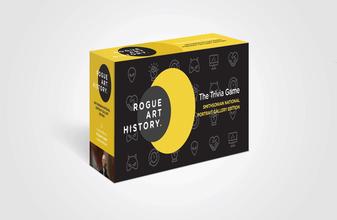More about Paul Robeson
- All
- Info
- Shop

Contributor
Paul Robeson by Betsy Graves Reyneau is a no-nonsense depiction of the legendary actor, athlete, and activist, just the way he was...minus the robe.
This portrait of Paul Robeson was part of an exhibition that cataloged the significant contributions of African Americans to the United States, documenting them with no artistic embellishment and thereby allowing for the sitter’s accomplishments to speak for themselves. Behind the show, which was titled “Portraits of Outstanding Americans of Negro Origins”, was the philanthropic organization The Harmon Foundation, which sought to combat racism through the exhibition. The show toured for ten years, until the Supreme Court ended segregation of schools with the Brown vs. Board of Education decision in 1954. Obviously racism was still a huge problem in the United States, and this was by no means the end of it, but now we have a great portrait of one of the most talented people in history.
Paul Robeson was born in 1898 to Anna Louisa and William Drew Robeson, an escaped slave. He was gifted in sports and academics from the very beginning and eventually got a scholarship to Rutgers University. He was one of only three African Americans to have done so at the time. While at Rutgers “he received top honors for his debate and oratory skills, won 15 letters in four varsity sports, was elected Phi Beta Kappa, and became his class valedictorian,” all of that in the face of severe racism. At one point a teammate literally tried to kill him, dislocating his shoulder, tearing out his fingernails, and breaking his nose. Robeson remained undeterred. He kept his streak of excellence alive while studying law at Columbia University from 1920-1923. In order to pay for his tuition, he taught Latin and played professional football, because what else? He was a lawyer for approximately two seconds before he quit because his firm was racist. A surprising move after enduring a teammate trying to kill him, but I digress. Afterwards, Robeson took advantage of the fact that he was also an amazing actor and singer and dedicated himself to the stage. In 1925, Robeson appeared in "The Emperor Jones", after which his life as a stage star began. He had been thoroughly prepped however, because of his stardom in every other field, athletic and otherwise. He appeared in many plays and movies, including "Show Boat" and a production of "Othello" that ran for almost three hundred performances, the most in history. This portrait shows him in his Othello costume.
He began to travel and live abroad and soon found a deep love for Russia and subsequently Communism. He said of Moscow, “Here I am not a Negro but a human being for the first time in my life... I walk in full human dignity.” America wasn’t too fond of this, and when Robeson refused to sign an affidavit stating that he was not a Communist, his passport was revoked. Which meant that his avenue for revenue was shut down. Soon Robeson became severely depressed. Even after his passport was reinstated, his career never recovered. He died in relative obscurity in 1976. The legacy he left never died, however. Several biographies have been written and several documentaries have been made in his honor. A variety of heirloom tomato in Russia was named after him (jealous), and he remains one of the most prolific artists in history. The American historian Clayton Riley described him as “One of the nation's greatest men, an individual whose time on earth has been spent in the pursuit of justice for all human beings and toward the enlightenment of men and women the world over.” Take that, racism!
Sources
- Duchen, Jessica. "Paul Robeson: Story Of American Icon's Death To Be Made Into A Film." The Independent. https://www.independent.co.uk/arts-entertainment/films/features/paul-ro…-
- Lewis, Jo Ann. "Titans Of History And Tiny Steps Of Progress." Washington Post, 1997. Accessed July 16, 2018.
- "Paul Robeson." Biography. Last modified, 2018. Accessed July 16, 2018.
- "Paul Robeson | National Portrait Gallery." Npg.si.edu. Accessed July 16, 2018.
- Whitman, Alden. "Paul Robeson Dead At 77; Singer, Actor And Activist." Nytimes.com. 1976. Accessed July 16, 2018.












